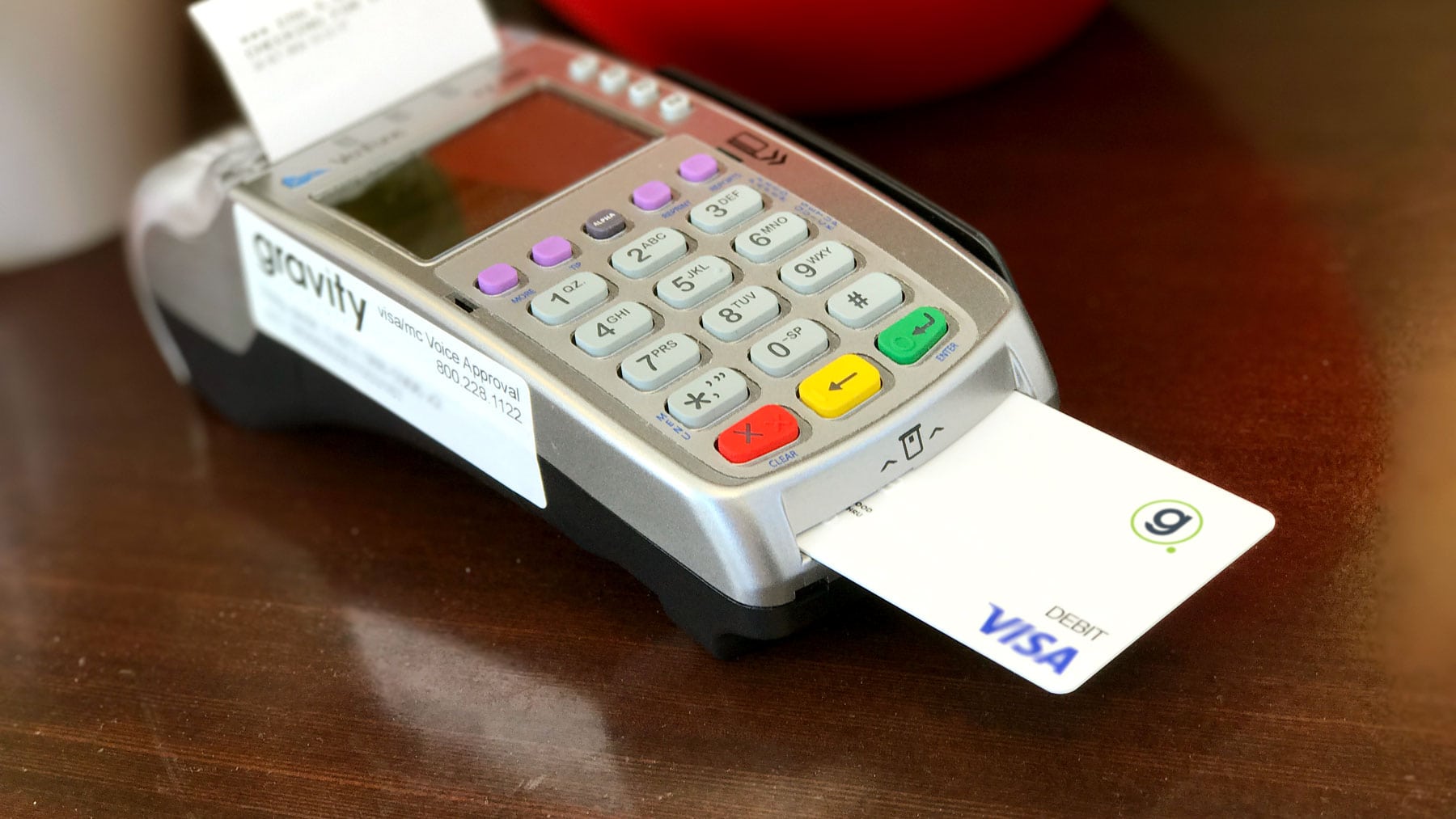What is EMV?
EMV is short for Europay, MasterCard, and Visa. This technology uses a computer chip on your card to authenticate the transaction, and is one of the most secure ways to run transactions from a plastic credit card or debit card.
The History of EMV Chip Card Technology in the United States
EMV has been the standard payment type for many major markets for decades, including Europe and Canada. It took about a decade longer for the US to adopt EMV chip payments as the standard.
On October 1st, 2015, a liability shift – more on this in a bit – happened in the US in concurrence with chip card technology. Before this switch, banks across the country printed hundreds of millions of chip cards and sent them to their customers.
This step to make card transactions more secure was important because the US, though only processing 25% of the world’s transactions before 2015, incurred 50% of the fraud.
Get the Gravity newsletter for the latest FAQs, tools, tips and tricks
By March 2019, 99% of payments in the US were made with EMV cards, compared to just 1.6% in September 2015
Now, let’s look at some common questions small business owners have about EMV.
What is the EMV Liability Shift?
Since October 1st, 2015, if a business is unable to accept an EMV enabled chip card and a customer is forced to use their magnetic stripe on the back of the card, the business is 100% liable for any fraud dispute.
The business automatically loses the dispute and has to refund the customer, regardless of whether or not fraud actually occurred. Note that while the liability is the same across all industries and business types, the risk is not.
What Industries are Most Susceptible to EMV Chargebacks?
If you cannot accept EMV, anyone with an EMV chip enabled card that runs a transaction with you can dispute and automatically win the claim.
There are a lot of factors to consider when deciding whether or not to accept the chip card. A doctor or dentist who knows all of their customers on a personal level might experience less EMV-related chargebacks than a retail store, for example.
Why is EMV More Secure?
With traditional magnetic stripe debit/credit cards, the same number is used to access and move money every time you swipe your card. With the EMV chip, a secret one-time only transaction code is created every time you make a purchase. This enables the chip card and the EMV card reader to speak to each other.
In the past, if someone stole your card information, they could use it many times because the number never changed. But EMV never uses the same number, so you are protected against this nightmare scenario when using EMV technology.
How to Pay with EMV Chip Card Technology
When purchasing something with your EMV card, you dip or insert the card – chip first – into the chip-enabled terminal instead of swiping. You leave the EMV debit/credit card inside the terminal until the screen prompts you to remove it.
Is EMV Compliance Required by Law?
No. EMV compliance is an industry standard, but there is no law in the United States that requires businesses to be EMV compliant.
The decision to accept EMV chip card payments is yours as the owner of your business. Remember, you are 100% liable for EMV payments related chargebacks if you don’t adopt the technology.
Some credit card processing companies charge monthly if your business is not compliant and charge a different fee if you are compliant. At Gravity Payments, we do not charge you additional fees for being EMV compliant or fees for not being compliant.
Why Does EMV Take Longer than Swiping?
It takes longer for EMV transactions to run because the computer chips are working to create the unique codes and tokens to add security to the transactions, which takes a few extra seconds.
Has EMV Increased Security and Reduced Fraud?
Yes. In September 2016, Mastercard reported a 54% decrease in counterfeit fraud costs in the US. This was just one year after the liability shift. In March 2019, Visa reported an 87% decrease in counterfeit fraud dollars.
EMV chip card technology has played a major role in increasing security and reducing payment fraud.
How Do I Accept EMV at My Business?
In order to accept chip cards at your business, you need a terminal or reader that accepts chip-enabled debit/credit cards. Gravity Payments offers an array of terminals to fit all your needs.
Are NFC and EMV the Same Thing?
No. They are entirely different types of technology – but they offer a lot of the same features. They are more secure than swiping, and they both use unique codes or tokens to secure the payments.
NFC stands for “near field communication” and allows devices like smartphones, watches, and other wearable technology to communicate with an NFC reader when they are in close proximity to each other.
EMV is a physical chip that communicates to the reader it is physically connected to.
NFC is wireless, cardless, and can be very secure. EMV is not wireless, is inside a card, and is very secure.
What Can Damage an EMV Chip?
EMV chip cards are not perfect – they can potentially get damaged.
Sharp objects: be careful with keys, coins, and other sharp objects in your pockets – they can damage the chip.
Water: most EMV chip cards are durable and can take light exposure to water such as rain – and even heavy exposure such as a cycle in a washing machine or an accidental plunge in a pool. However, it’s best to avoid excessive and repeated water exposure as it can deteriorate the card over time.
Magnets: contrary to popular belief, magnets do not damage EMV chips.
If you have further questions about credit card processing for your business, please let us know.




